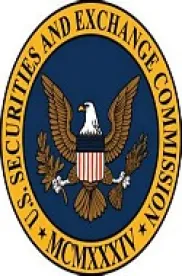On July 10, 2013, the Securities and Exchange Commission ("SEC") amended Rule 506 of Regulation D by adding Rule 506(c), which eliminates the prohibition against general solicitation and advertising in conducting private placements under Rule 506. In adopting this change, which was mandated by the Jumpstart Our Business Startups Act of 2012, the SEC added a requirement that an issuer conducting a Rule 506(c) offering using general solicitation or advertising must affirmatively take reasonable steps to verify that the purchasers of the securities are accredited investors. Also on July 10, 2013, the SEC adopted amendments to Regulation D that impose "bad actor" disqualification requirements on private placement offerings under Rule 506, as required by the Dodd-Frank Wall Street Reform and Consumer Protection Act of 2010. Rule 506(c) and the "bad actor" disqualification requirements codified under Rule 506(d) become effective September 23, 2013.
Rule 506(c) Offering Requirements:1
New Rule 506(c) permits the use of general solicitation and general advertising in private placements of securities under Regulation D provided that: (i) all purchasers of the securities are "accredited investors"; (ii) the issuer takes "reasonable steps" to verify that all purchasers of the securities are accredited investors; and (iii) the terms and conditions of Rules 501, 502(a) and 502(d) of Regulation D are satisfied.2 Although Rule 506(c) offerings have the benefit of being able to reach a wider audience by virtue of the ability to generally solicit (or generally advertise to) anyone – irrespective of whether a pre-existing substantive relationship exists between the issuer and the prospective investor – the pool of available investors is smaller because of the absolute prohibition on sales to non-accredited investors.
To determine whether a purchaser is an accredited investor, the issuer must take "reasonable steps" to verify the purchaser's status as such. The final rule provides that "reasonable" means an objective determination by the issuer in the context of the particular facts and circumstances of each purchaser and transaction. Certain factors an issuer should consider in conducting this analysis include: (i) the nature of the purchaser and the type of accredited investor the purchaser claims to be; (ii) the amount and type of information the issuer has with respect to the purchaser; and (iii) the nature of the offering (e.g., the manner of the solicitation and the terms of the offering).
For accredited investors that are natural persons, the SEC has provided four non-exclusive, non-mandatory steps that, if used, would satisfy the verification requirement of Rule 506(c). These non-exclusive, non-mandatory steps include:
(i) where a purchaser is qualifying on the basis of income, reviewing, for example, the purchaser's Form W-2, Form 1099, Schedule K-1 to Form 1065, or Form 1040, and obtaining a written representation that the purchaser has a reasonable expectation of reaching a qualifying level of income in the current year;
(ii) where a purchaser is qualifying on the basis of net worth, reviewing one or more of the following types of information, dated within the prior three months, and obtaining a written representation from the purchaser that all applicable liabilities have been disclosed:
(a) for assets – bank statements, brokerage statements, other statements of securities holdings, certificates of deposit, tax assessments, and appraisal reports, and
(b) for liabilities – a consumer report from a nationwide consumer reporting agency;
(iii) obtaining a written confirmation from a registered broker-dealer, SEC-registered investment adviser, licensed attorney, or CPA that he, she, or it has taken reasonable steps to verify, within the past three months, that the purchaser is an accredited investor; or
(iv) where a purchaser has purchased securities in an issuer's Rule 506 offering as an accredited investor prior to September 23, 2013, and continues to hold the same securities for that same issuer's Rule 506(c) offering, obtaining a written certification from such purchaser that he or she qualifies as an accredited investor.
The verification requirement imposed on issuers under Rule 506(c) is separate and distinct from the requirement that all purchasers must be accredited investors. Thus, the verification requirement must be satisfied even if all purchasers ultimately turn out to be accredited investors.
Rule 506(c) also requires the satisfaction of Rules 501, 502(a), and 502(d) of Regulation D. Significantly, the issuer needs to carefully consider the potential for "integration" – that is, the treatment of several offerings of securities as a single offering. For example, because general solicitation and general advertising is permitted in Rule 506(c) offerings but not in other Regulation D offerings, the issuer needs to consider whether conducting multiple Regulation D offerings within close proximity of one another will be deemed integrated. If they are, this could result in the inapplicability of the Regulation D exemption to the entire integrated offering.
Securities sold under a Rule 506(c) offering will be deemed "covered securities" for purposes of Section 18(b)(4)(E) of the Securities Act of 1933. Such sales therefore will not be subject to the registration requirements of any state (apart from a state's notice filing and filing fee requirements).
"Bad Actor" Disqualification Requirements:3
The "bad actor" disqualifications under new Rule 506(d) preclude the availability of Rule 506 as an exemption from registration if any covered person is involved with a disqualifying event.4 The list of covered persons includes: (i) the issuer (or any predecessor or affiliate thereof); (ii) any director, executive officer, or other officer participating in the offering; (iii) a general partner or managing member of the issuer; (iv) any beneficial owner of 20% or more of the issuer's outstanding voting equity securities (determined on the basis of voting power); (v) any promoter of the issuer at the time of such sale; (vi) any investment manager of the issuer that is a pooled investment fund; (vii) any person that has been paid, directly or indirectly, remuneration for solicitation of purchasers in connection with such sale of securities; (viii) any general partner or managing member of any such investment manager or solicitor; or (ix) any director, executive officer, or other officer participating in the offering of such investment manager or solicitor or general partner or managing member of such investment manager or solicitor.5
Rule 506(d) lists several different disqualification events relating to covered persons, including:
(i) a conviction of certain securities-related felonies or misdemeanors within the ten years before the sale (five years in the case of the issuer or any predecessor or affiliate thereof);
(ii) an order, judgment or decree of any court entered within five years of the sale restraining or enjoining a covered person from engaging in certain securities-related activities;
(iii) certain types of final orders from a state securities commission, a state authority that supervises or examines financial institutions, a state insurance commission, a federal banking agency, the U.S. Commodity Futures Trading Commission, the National Credit Union Administration or the SEC barring a covered person from certain securities-related activities or finding that the covered person engaged in certain securities violations;
(iv) a covered person is suspended or expelled from, or barred from association with, a member of a national securities exchange or a registered national or affiliated securities association for any act or omission constituting conduct inconsistent with just and equitable principles of trade;
(v) a covered person has filed (or was named as an underwriter in) any registration statement or Regulation A offering statement that, within the five years preceding the Rule 506 sale, was subject to a refusal order, stop order, or order suspending the Regulation A exemption, or is, at the time of such sale, the subject of an investigation or proceeding to determine whether a stop order or suspension should be issued; or
(vi) a covered person is subject to a U.S. Postal Service false representation order entered within the five years prior to the sale, or is, at the time of such sale, subject to a temporary restraining order or preliminary injunction with respect to conduct alleged by the U.S. Postal Service to constitute a scheme or device for obtaining money or property through the mail by means of false representations.6
Any disqualification from a Rule 506 offering by virtue of Rule 506(d) will apply only for those disqualification events that occur on or after September 23, 2013. Any disqualification events that occurred before September 23, 2013 must be disclosed in writing within a reasonable time prior to any sale under Rule 506.7 Notwithstanding the foregoing, disqualification events under Rule 506(d) and any required disclosures of pre-existing disqualification events will not be applicable to an issuer that did not know, and in the exercise of "reasonable care" could not have known, of the existence of the disqualification (or pre-existing disqualification) event. A demonstration of "reasonable care" requires a factual inquiry into whether any disqualification events exist. The nature and scope of the inquiry will vary depending on the facts and circumstances. Unfortunately, the SEC has not prescribed what specific steps are necessary for an issuer to demonstrate the exercise of "reasonable care."
1 See Eliminating the Prohibition Against General Solicitation and General Advertising in Rule 506 and Rule 144A Offerings, Release No. 33-9415; No. 34-69959; No. IA-3624; File No. S7-07-12 (July 10, 2013), available at http://www.sec.gov/rules/final/2013/33-9415.pdf.
2 See 17 C.F.R. § 230.506(c). Some examples of general solicitation and general advertising include: advertisements published in newspapers and magazines, communications broadcast over television, radio, or through unrestricted websites.
3 See Disqualification of Felons and Other "Bad Actors" from Rule 506 Offerings, Release No. 33-9414; File No. S7-21-11 (July 10, 2013), available at http://www.sec.gov/rules/final/2013/33-9414.pdf.
4 See 17 C.F.R. §§ 230.506(d)–230.506(e).
5 See 17 C.F.R. § 230.506(d)(1).
6 See id.
7 See 17 C.F.R. § 230.506(e).




 />i
/>i

